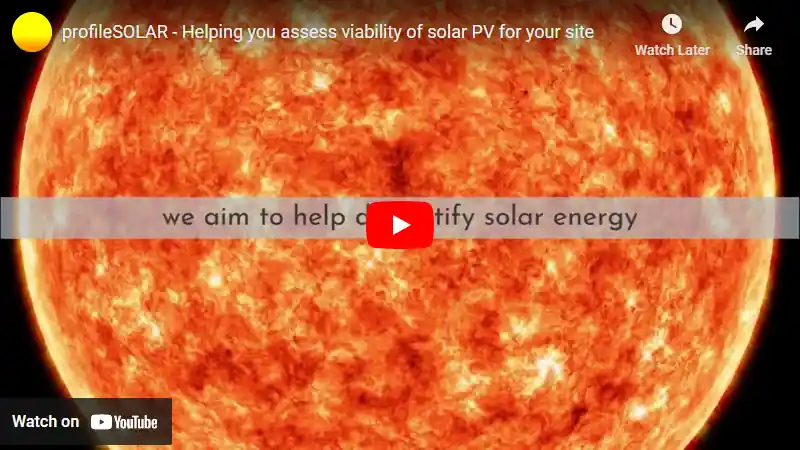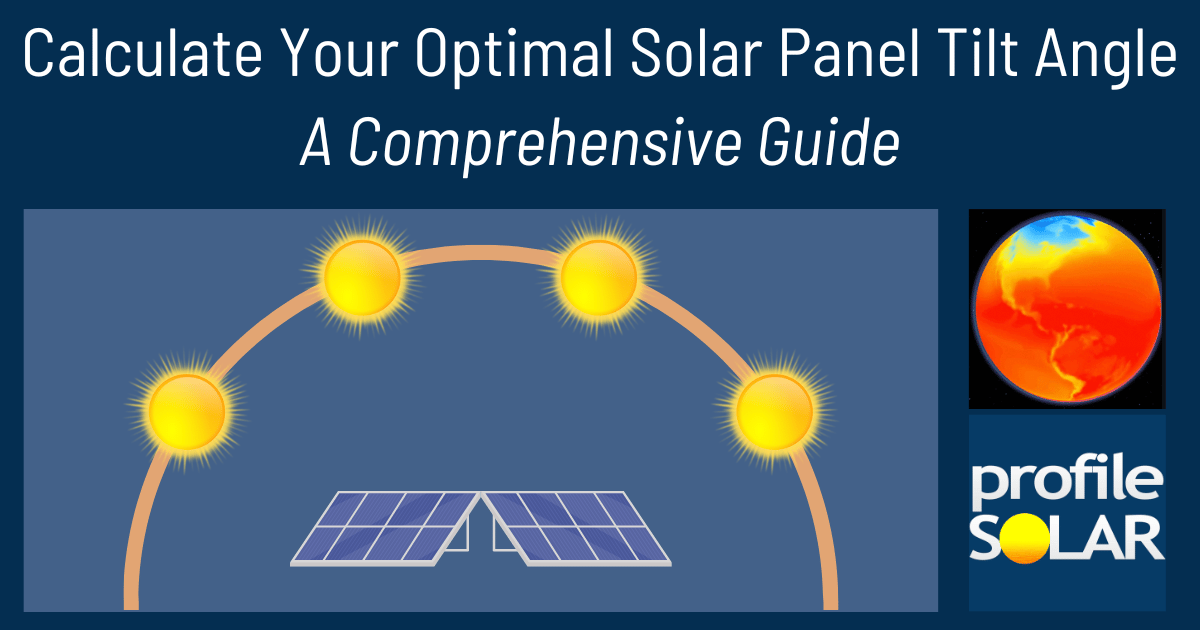

The location at Wagga Wagga, New South Wales, Australia, is generally good for generating solar energy throughout the year. During the summer season, you can expect to generate a lot of solar energy with an average of 8.30 kilowatt-hours (kWh) per day for every kilowatt (kW) of installed solar power. This decreases in autumn and winter with averages of 4.68 kWh/day and 2.76 kWh/day respectively, but it rebounds in spring with an average production of 6.12 kWh/day.
This means that the ideal times to generate solar energy at this location are during the summer and spring seasons when sunlight is abundant due to longer days and clear weather conditions.
If you're planning on installing a fixed panel solar system in this location, tilting your panels at an angle of 30 degrees towards the North will help maximize your total year-round production from your photovoltaic (PV) system.
However, local factors such as environmental conditions or topography could potentially impede solar production at this location if they are significant enough. For instance, if there's heavy cloud cover or fog often present in certain seasons or parts of the year that could limit the amount of sunlight reaching your panels thus reducing their output.
Similarly, any large hills or mountains nearby could cast shadows on your panels especially early morning or late afternoon which would also reduce their efficiency.
To mitigate these potential issues; firstly ensure that you install your panels in a place where they're not shaded by any physical obstacles like buildings or trees throughout most parts of the day all-year-round - especially during peak sun hours between 9am-3pm local time when they can produce most electricity.
Secondly consider using more efficient types of PV modules like monocrystalline silicon ones which perform better under low light conditions compared to other types; also consider using tracking mounts for your panels so they can follow sun's path across sky and capture more sunlight throughout the day.
Lastly, regular cleaning and maintenance of your panels will also help ensure they're always functioning at their best despite any local environmental factors that could potentially affect their performance.
Note: The Southern Temperate Zone extends from -35° latitude South down to -66.5° latitude.
So far, we have conducted calculations to evaluate the solar photovoltaic (PV) potential in 492 locations across Australia. This analysis provides insights into each city/location's potential for harnessing solar energy through PV installations.
Link: Solar PV potential in Australia by location
Solar output per kW of installed solar PV by season in Wagga Wagga
Seasonal solar PV output for Latitude: -35.1025977, Longitude: 147.3655103 (Wagga Wagga, Australia), based on our analysis of 8760 hourly intervals of solar and meteorological data (one whole year) retrieved for that set of coordinates/location from NASA POWER (The Prediction of Worldwide Energy Resources) API:




Ideally tilt fixed solar panels 30° North in Wagga Wagga, Australia
To maximize your solar PV system's energy output in Wagga Wagga, Australia (Lat/Long -35.1025977, 147.3655103) throughout the year, you should tilt your panels at an angle of 30° North for fixed panel installations.
As the Earth revolves around the Sun each year, the maximum angle of elevation of the Sun varies by +/- 23.45 degrees from its equinox elevation angle for a particular latitude. Finding the exact optimal angle to maximise solar PV production throughout the year can be challenging, but with careful consideration of historical solar energy and meteorological data for a certain location, it can be done precisely.
We use our own calculation, which incorporates NASA solar and meteorological data for the exact Lat/Long coordinates, to determine the ideal tilt angle of a solar panel that will yield maximum annual solar output. We calculate the optimal angle for each day of the year, taking into account its contribution to the yearly total PV potential at that specific location.

Seasonally adjusted solar panel tilt angles for Wagga Wagga, Australia
If you can adjust the tilt angle of your solar PV panels, please refer to the seasonal tilt angles below for optimal solar energy production in Wagga Wagga, Australia. As mentioned earlier, for fixed-panel solar PV installations, it is optimal to maintain a 30° North tilt angle throughout the year.
| Overall Best Summer Angle | Overall Best Autumn Angle | Overall Best Winter Angle | Overall Best Spring Angle |
|---|---|---|---|
| 19° North in Summer | 40° North in Autumn | 50° North in Winter | 28° North in Spring |
Our recommendations take into account more than just latitude and Earth's position in its elliptical orbit around the Sun. We also incorporate historical solar and meteorological data from NASA's Prediction of Worldwide Energy Resources (POWER) API to assign a weight to each ideal angle for each day based on its historical contribution to overall solar PV potential during a specific season.
This approach allows us to provide much more accurate recommendations than relying solely on latitude, as it considers unique weather conditions in different locations sharing the same latitude worldwide.
Calculate solar panel row spacing in Wagga Wagga, Australia
We've added a feature to calculate minimum solar panel row spacing by location. Enter your panel size and orientation below to get the minimum spacing in Wagga Wagga, Australia.
Our calculation method
- Solar Position:
We determine the Sun's position on the Winter solstice using the location's latitude and solar declination. - Shadow Projection:
We calculate the shadow length cast by panels using trigonometry, considering panel tilt and the Sun's elevation angle. - Minimum Spacing:
We add the shadow length to the horizontal space occupied by tilted panels.
This approach ensures maximum space efficiency while avoiding shading during critical times, as the Winter solstice represents the worst-case scenario for shadow length.
Topography for solar PV around Wagga Wagga, Australia
Wagga Wagga is located in the Riverina region of New South Wales, Australia. The topography is largely flat with some gently rolling hills. The city itself lies on the banks of the Murrumbidgee River.
The climate in Wagga Wagga is hot-summer Mediterranean, which means it experiences hot summers and mild winters. It also receives a good amount of sunlight throughout the year, making it suitable for solar PV installations.
Considering these factors, areas most suited to large-scale solar PV would be those with flat or gently sloping terrain that receive maximum sun exposure. This could include open fields or farmlands surrounding Wagga Wagga as well as rooftops within the city itself.
Additionally, any large-scale solar project would also need to consider proximity to infrastructure like power grids for energy transmission and access roads for installation and maintenance purposes.
It's worth noting that there are already several operational solar farms in this region such as Bomen Solar Farm near Wagga Wagga which suggests this area indeed has favorable conditions for such developments.
Australia solar PV Stats as a country
Australia ranks 7th in the world for cumulative solar PV capacity, with 19,076 total MW's of solar PV installed. This means that 10.70% of Australia's total energy as a country comes from solar PV (that's 2nd in the world). Each year Australia is generating 742 Watts from solar PV per capita (Australia ranks 2nd in the world for solar PV Watts generated per capita). [source]
Are there incentives for businesses to install solar in Australia?
Yes, there are a variety of incentives available in Australia to businesses wanting to install solar energy. These include:
1. Renewable Energy Target (RET): The RET provides businesses with financial assistance for installing and operating renewable energy systems such as solar panels. Businesses may be eligible to receive certificates that can be sold or traded on the open market for additional income.
2. Feed-in Tariffs: Some states offer feed-in tariffs which pay businesses for generating and exporting excess electricity from their solar panel system back into the grid during peak demand periods.
3. Solar Credits: The Solar Credits program provides households and small business owners with an upfront discount when purchasing a new solar system, based on the amount of renewable energy generated by the system over its lifetime.
4. Tax Breaks: Small business owners may be able to claim tax deductions on certain expenses associated with installing a solar power system, including installation costs, maintenance expenses and interest payments related to financing arrangements taken out specifically for this purpose.
Do you have more up to date information than this on incentives towards solar PV projects in Australia? Please reach out to us and help us keep this information current. Thanks!
Citation Guide
Article Details for Citation
Author: Aaron Robinson
Publisher: profileSOLAR.com
First Published: Friday 12th of August 2022
Last Updated: Wednesday 26th of June 2024
Tell Us About Your Work
We love seeing how our research helps others! If you've cited this article in your work, we'd be delighted to hear about it. Drop us a line via our Contact Us page or on X, to share where you've used our information - we may feature a link to your work on our site. This helps create a network of valuable resources for others in the solar energy community and helps us understand how our research is contributing to the field. Plus, we occasionally highlight exceptional works that reference our research on our social media channels.
Feeling generous?

Share this with your friends!


Compare this location to others worldwide for solar PV potential
The solar PV analyses available on our website, including this one, are offered as a free service to the global community. Our aim is to provide education and aid informed decision-making regarding solar PV installations.
However, please note that these analyses are general guidance and may not meet specific project requirements. For in-depth, tailored forecasts and analysis crucial for feasibility studies or when pursuing maximum ROI from your solar projects, feel free to contact us; we offer comprehensive consulting services expressly for this purpose.
Helping you assess viability of solar PV for your site
Calculate Your Optimal Solar Panel Tilt Angle: A Comprehensive Guide
Enhance your solar panel's performance with our in-depth guide. Determine the best tilt angle using hard data, debunk common misunderstandings, and gain insight into how your specific location affects solar energy production.

.svg)





